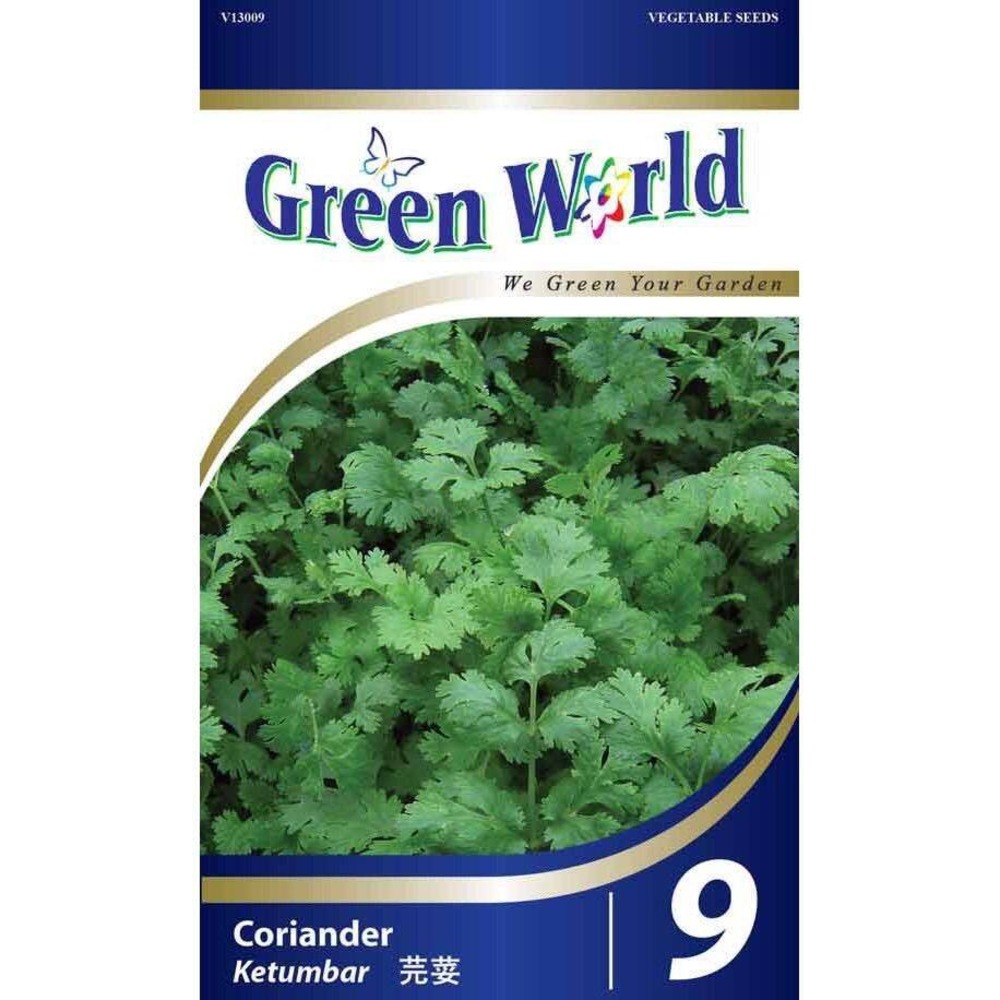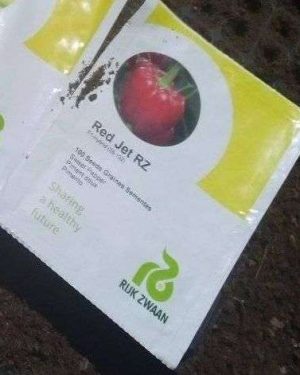Coriander Ketumbar 009 Seeds (Green World) | 5g (MOQ:3)
₦5,000.00
Compare productDescription
Coriander Ketumbar 009 Seeds (Green World) | 5g (MOQ:3) are a specific variety of coriander (Coriandrum sativum) seeds intended for cultivation. “Ketumbar” is the Malay and Indonesian word for coriander, indicating this product is targeted towards growers in Southeast Asia. The “009” likely denotes a specific selected strain, potentially bred for regional adaptability.
- Brand: Green World (A common brand for seeds and horticultural supplies in the region).
- Product Type: Herb Seeds (Coriander/Cilantro).
- Variety: Ketumbar 009.
- Pack Size: 5g per packet (approximately 300-400 seeds).
- MOQ: 5 packets (Minimum Order Quantity).
Characteristics of Coriander Ketumbar 009 Seeds (Green World) | 5g (MOQ:3):
-
Plant Habit & Growth:
-
Type: Annual herb.
-
Leaves: The fresh leaves are known as cilantro or Chinese parsley. They are bright green, lobed, and aromatic.
-
Seeds: The dried seeds are the spice coriander or ketumbar, which are round, beige, and have a warm, citrusy fragrance.
-
-
Dual-Purpose Use:
-
Leaf Production: Grown primarily for its fresh, pungent leaves, a staple in many Asian, Latin American, and Middle Eastern cuisines.
-
Seed Production: If allowed to flower and bolt, the plant will produce seeds that can be harvested and dried for use as a spice.
-
Growing Guide:
1. Sowing:
-
When: In tropical climates, it can be grown year-round. In cooler areas, sow in spring after the last frost. It prefers cooler weather and may bolt (flower) quickly in intense heat.
-
How: Sow seeds directly into the garden soil or containers, about 0.5-1 cm deep. They can be slow to germinate.
-
Spacing: Space seeds 15-20 cm apart.
2. Site & Care:
-
Sun: Prefers full sun to partial shade. In very hot climates, afternoon shade can help prevent bolting.
-
Soil: Well-draining, fertile soil.
-
Watering: Keep soil consistently moist but not waterlogged.
-
Succession Planting: For a continuous supply of leaves, sow new seeds every 2-3 weeks.
3. Harvesting:
-
Leaves (Cilantro): Harvest outer leaves once the plant is 10-15 cm tall. Cut what you need, and the plant will continue to produce.
-
Seeds (Coriander/Ketumbar): Allow the plant to flower. The seeds will form in round clusters. Harvest the seed heads when they turn brown and dry. Hang them upside down in a paper bag to finish drying and collect the seeds.
Primary Uses & Benefits:
-
Culinary Herb (Cilantro): Essential for salsas, curries, soups, salads, pho, and garnishes.
-
Spice (Coriander/Ketumbar): A key spice in curry powders, masalas, pickling spices, and marinades. Often dry-roasted and ground.
-
Gardening: Easy to grow in pots or gardens, providing a fresh, continuous supply of a popular herb.
-
Cost-Effective: Growing from seed is far more economical than repeatedly buying fresh bunches of cilantro from the store.
Important Notes & Warnings:
-
Genetic Trait: A significant portion of the population has a genetic trait that makes cilantro taste like soap. This is not a defect of the seed but a individual’s perception.
-
Bolting: Cilantro has a tendency to “bolt” (produce flowers and seeds) quickly in hot weather. Once it bolts, leaf production slows and the leaves become more bitter. The “009” variety may offer improved bolt resistance.
-
MOQ Reason: The Minimum Order Quantity of 3 packets makes this product suitable for:
-
Small-scale commercial herb farmers.
-
Community gardening groups.
-
Serious home gardeners who want to ensure a large, successive supply or who wish to harvest their own coriander seeds.
-
Additional information
| Weight | 4.1 kg |
|---|






